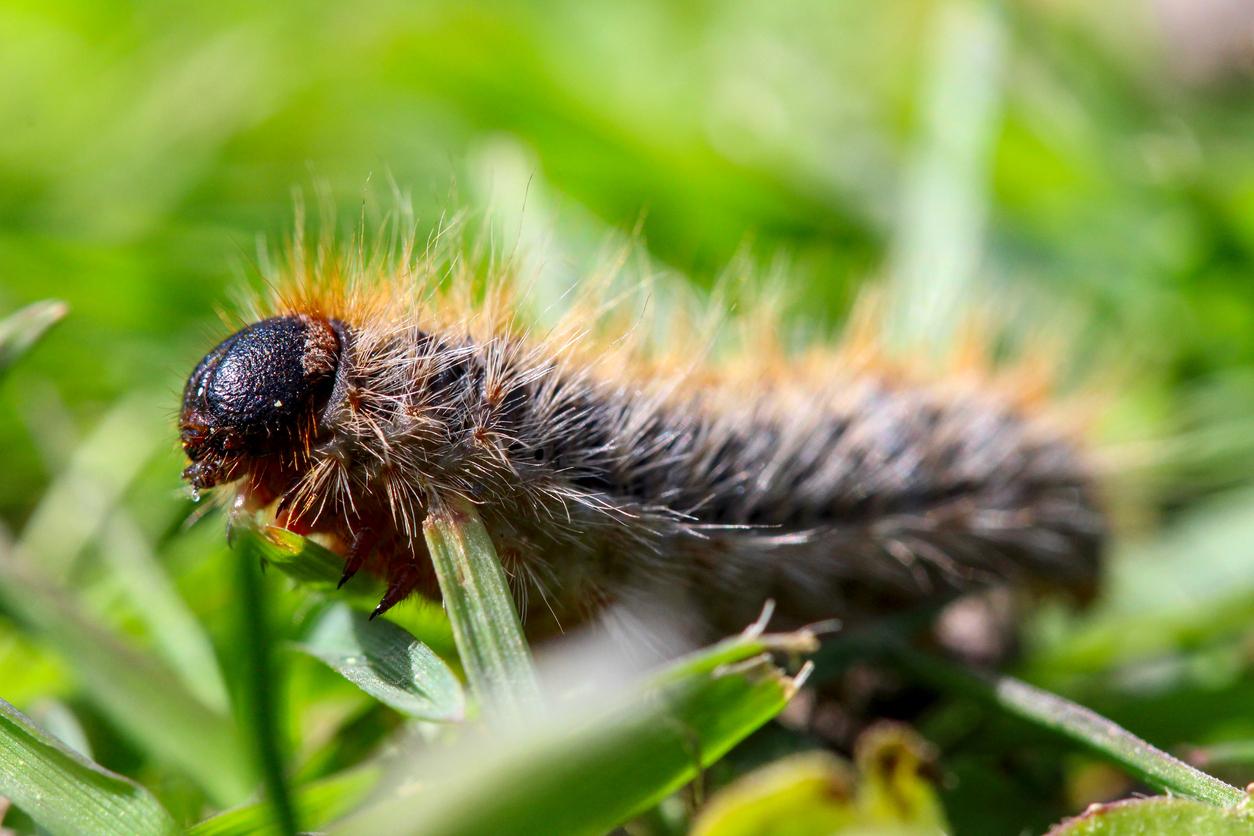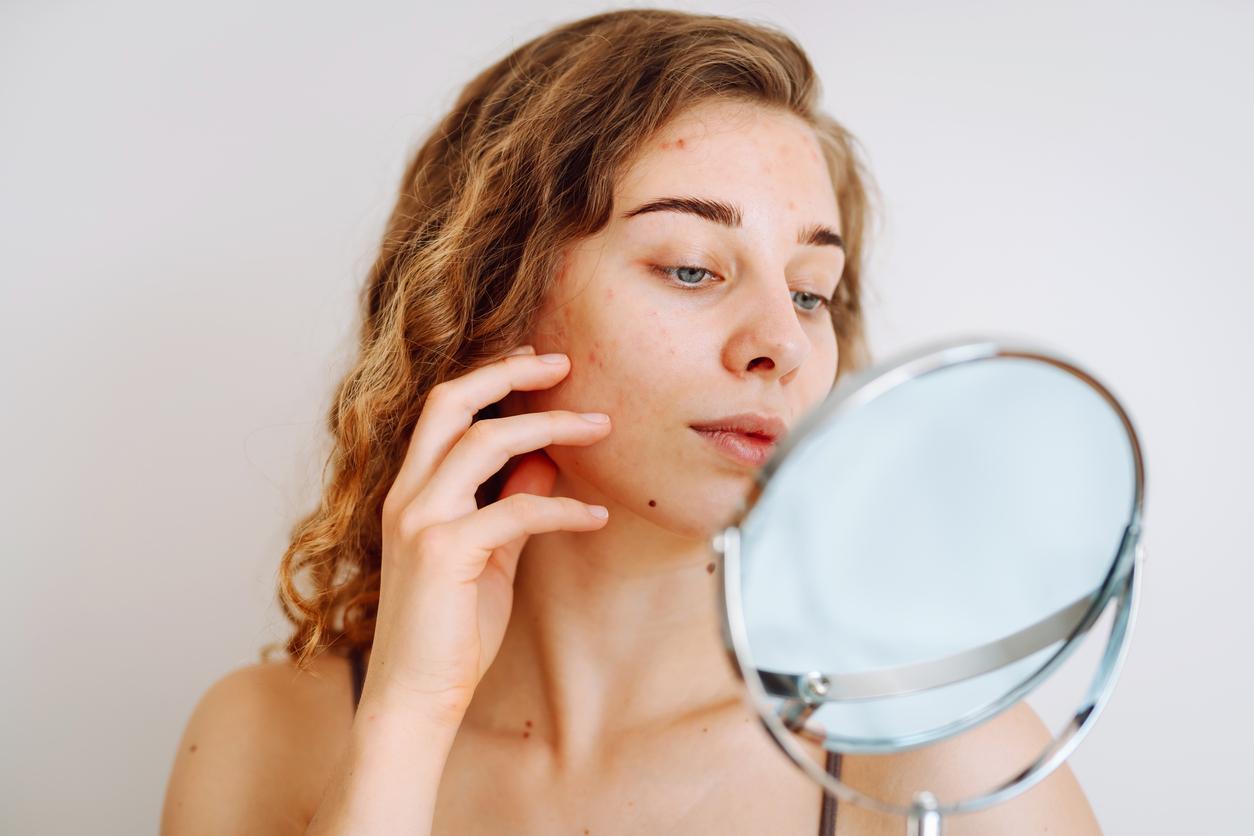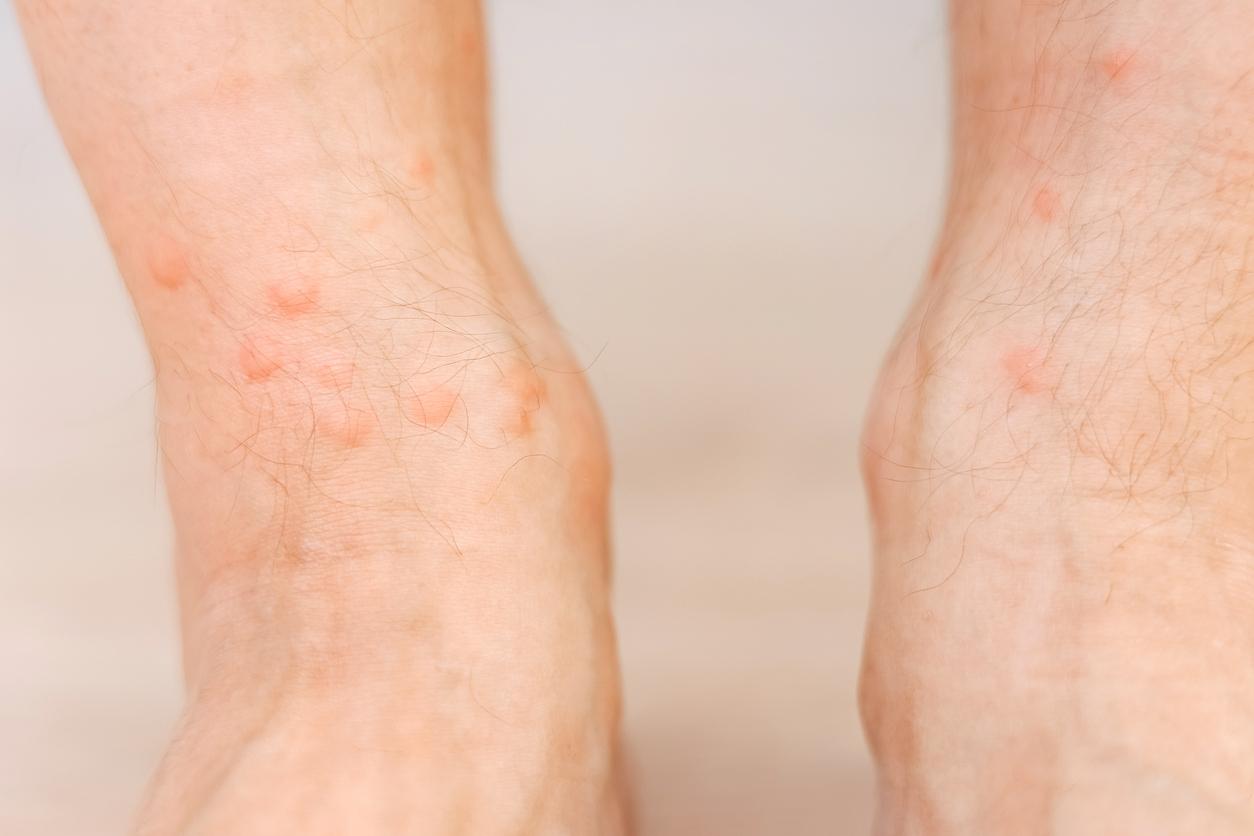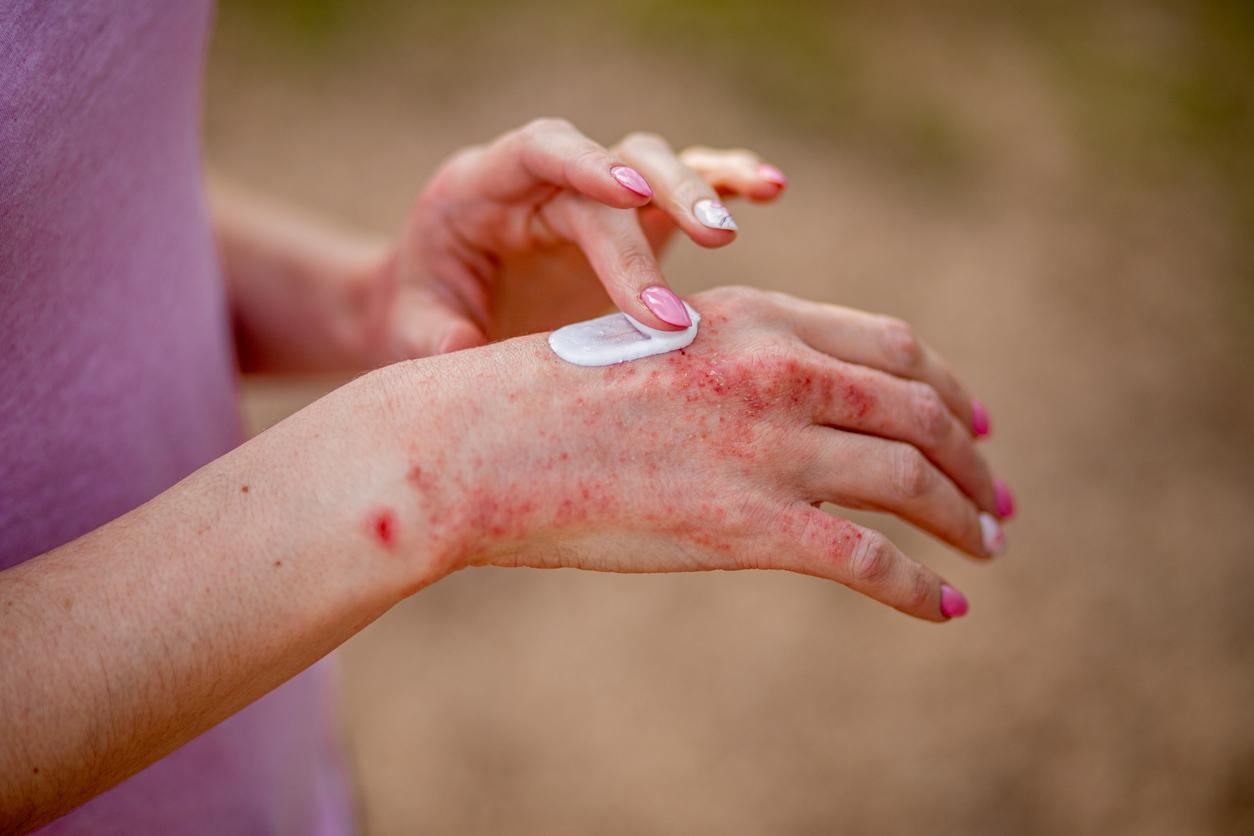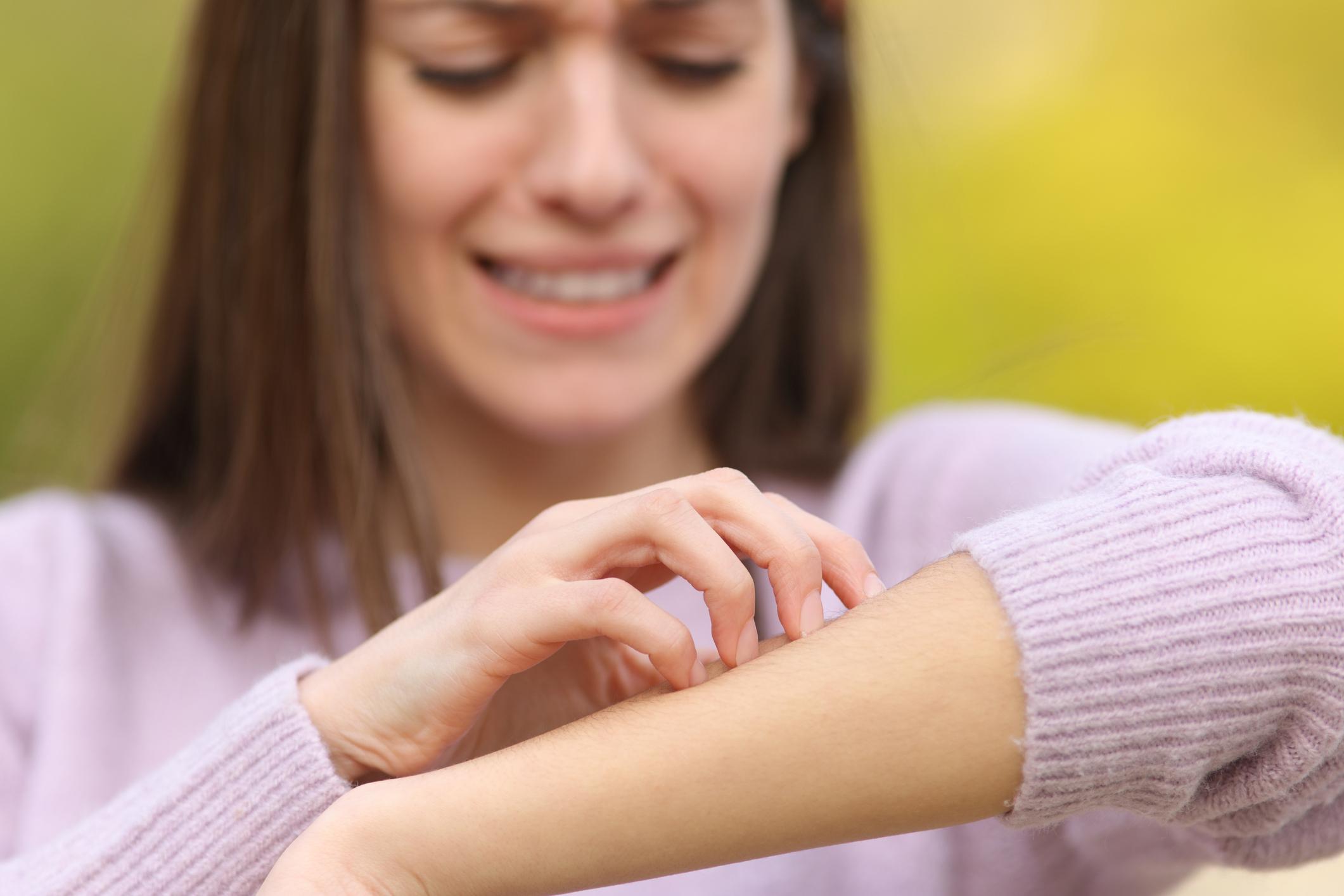Researchers have just developed a flexible and portable sensor which, when placed in the palm of the hand, makes it possible to objectively measure itching. Tested on children suffering from atopic dermatitis, it could also help adults with itching.
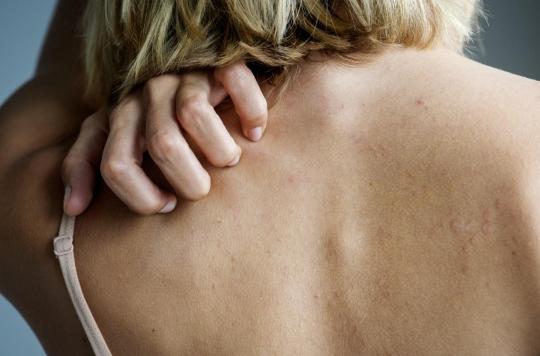
- Placed in the hand, this flexible and portable sensor makes it possible to actually quantify itching by measuring scratching.
- It will be able to become a precious tool for measuring the effectiveness of treatments, in particular those for children suffering from atopic dermatitis (eczema in infants), who cannot always verbalize their suffering.
For those who experience it on a regular and intense basis, itching causes real suffering and can be as debilitating as chronic pain.
This painful sensation that makes you want to scratch constantly (called pruritus) is all the more difficult to bear as it is a symptom that is difficult to measure, especially in children with atopic dermatitis, also called eczema. Toddlers cannot always verbalize or quantify their suffering. As for adults, it can also be difficult for them to objectively measure itching when they suffer from liver disease, kidney disease or certain cancers.
An innovation, developed by researchers at Northwestern University (United States) could help them. In an article published in the journal Science Advances, they explain that they have developed a flexible and wearable sensor that, when placed on the hand, actually quantifies itching by measuring scratching. Tested on patients with atopic dermatitis, it may, however, be useful for measuring itching related to other conditions.
A portable and very precise sensor
The study was conducted in two parts. The first involved training the sensor to detect scratching in healthy adults who scratch voluntarily. The second part consisted of testing the sensors on pediatric patients with atopic dermatitis. An algorithm was also created to count scratches in small patients. Over 300 hours of sleep data were manually reviewed and scored based on scratching, then linked to the sensors.
The sensor wraps seamlessly around the hand and is paired with machine learning algorithms that specifically identify scratching without being tricked by similar movements (e.g. hand waving). The sensor measures both low-frequency hand movements and high-frequency hand vibrations, dramatically improving accuracy over wristwatch-style tools.
Itching that ruins life
In France, it is estimated that 10 to 20% of children suffer from atopic dermatitis, and this disease persists into adulthood in more than 40% of cases. The hallmark symptom is itching, which leads to sleep disturbances, poor neurocognitive development and, on average, one full night’s sleep lost per week.
“Atopic dermatitis is more than just itchy skin, insists Shuai “Steve” Xu, assistant professor of dermatology and pediatrics at Northwestern University Feinberg School of Medicine Xu. It is a devastating disease that causes enormous suffering around the world. The quality of life of severe atopic dermatitis (not only for the child but also for the parent) is equivalent to that of many fatal diseases.”
According to him, patients with atopic dermatitis are 44% more likely to report suicidal thoughts due to itching compared to controls. The use of this sensor will allow children and adults suffering from chronic itching to measure the effectiveness of treatment against pruritus, and thus improve their quality of life.


.










